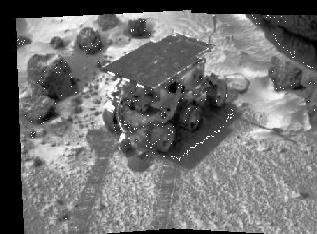This image shows the Rover at work.
Click on image for full size
Image from: JPL/NASA
Soils explored by the Rover
One of the measurement objectives of the Mars Pathfinder mission was the examination of the composition and structure of the soil. As the Rover traversed the surface exploring the rocks of Mars, it also sampled the soil near those rocks. Some soil mechanics experiments were performed by spinning the Rover's wheels (mostly the rear wheels). As the wheels dug into the surface, the Rover discovered that much of the ground is made of dust, possibly deposited during many of the Martian Global Dust Storms.
Scientists have identified four types of soils in the Martian surface near the Pathfinder landing site.
- Dark Soil (dark gray)
- Bright Soil (bright red)
- Disturbed Soil (disturbed by the passage of the Rover & airbags)
- Lamb-like Soil (just found around the rock "the Lamb")
The soils show a variety of mixing and layering features including:
- finely grained, cloddy & rocky soil, found near the rock named Pooh Bear
- a cemented crust which couldn't be moved by the Rover's wheels, found near Pop-Tart & Scooby Doo
Everywhere the Rover passed, it disturbed the soil, and the soil underneath turned out to be a darker red-brown soil than it's surroundings. An example of disturbed soil occured when the Rover crossed the
Mermaid Dune, shown
here.
Results of the soil study include the fact that the soils do not seem to be the weathering products of the eroded rock nearby, thus they are not derived from the rocks nearby. Soils are similar, however, to those found at the Viking landing sites. Scientists are busy trying to figure out how these soils could have been created.
You might also be interested in:
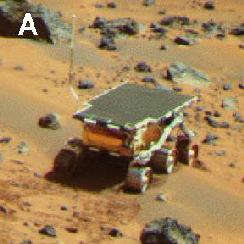
During the Mars Pathfinder Rover's exploration of the Martian surface, it traversed what scientists now call the "Mermaid Dune", covered with soils. The soil on top of Mermaid Dune seemed to have a dark
...more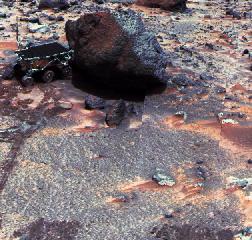
Soils found by the Rover do not seem to be derived from the rocks at the Pathfinder landing site. They do not seem to be the weathering products of the eroded rock nearby. Scientists did not find evidence
...more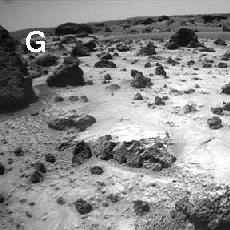
There are two main weathering agents on Mars: wind and acid fog. Although acid fog can be very important, because large amounts of water are not readily accessible from the Martian surface, the action
...more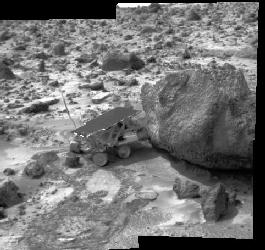
Yogi was the second rock to be explored by the Rover. It was a rock about 1 meter tall, and was about 5 meters northwest of the Mars Pathfinder lander. Yogi appeared to be a bright rock and was relatively
...more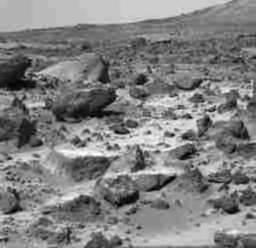
This diagram shows the path traveled by the Mars Pathfinder Rover during its 80 day mission. In addition to sampling the atmosphere, and the Martian soil, during it's travels on the Martian surface, the
...more


